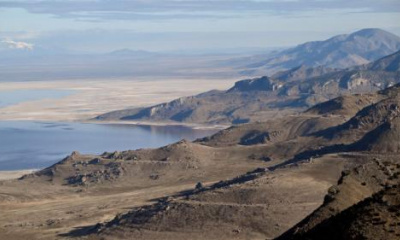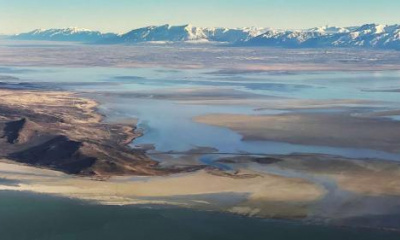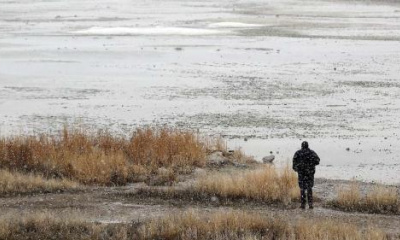The 2002 Winter Games marks the last time the lake’s elevation hovered in the safe zone.
The Great Salt Lake remains in a dangerous place, but experts say with a lot of effort, its water can rise to a healthy elevation in 10 years — just in time for Utah to host the 2034 Olympics.
Members of the Great Salt Lake Strike Team floated it as a possible target during a data and policy update presentation on Wednesday. The University of Utah and Utah State University formed the team to provide information and suggestions to help Utah’s struggling lake rebound.
“The Olympics are this extraordinary window of opportunity,” said Bill Anderegg, a co-chair of the strike team and director of the Wilkes Center for Climate Science and Policy at the University of Utah. “We have this 10-year period, to show the world how to conserve water, how to manage a terminal lake and how to really work together to prosper in a dry climate.”
The International Olympic Committee named Salt Lake City its preferred host for the 2034 Winter Olympics and Paralympics late last year. And as visitors from around the world descend upon Utah for the Games a decade from now, one of the first things they’ll see is the Great Salt Lake as they land in the Salt Lake City International Airport, Anderegg noted.
“This is a motivator and a huge opportunity for the state,” he said. “We can be a world leader.”
The Department of Natural Resources has developed an elevation matrix for the Great Salt Lake identifying its healthy range — when islands are islands again, salinity levels help brine shrimp and brine flies thrive, bird habitat is abundant — but the water is not so high that it causes the flooding and havoc seen in the 1980s. That sweet spot lies between 4,198 and 4,205 feet above sea level.
The last time the lake reached an average annual elevation above 4,198 feet was 2002 — the same year Salt Lake City last hosted the Winter Games. The lake came close to the healthy range in 2012, but didn’t quite make it over 4,198.
Today, the south half of the Great Salt Lake sits at 4,192.5 feet and the north half is at 4,189.5. A rock-filled railroad causeway bisecting the lake restricts water from flowing north, which means the elevations in the different halves sometimes vary. State resource managers filled in a breach through that causeway in 2022 to stave off rising salinity levels in the fresher southern half, which has made those elevation differences much more pronounced.
To get both sections of the lake back to 4,198 feet — the minimum healthy elevation — Utahns would have to adopt “highly aggressive” conservation measures, a strike team summary report notes. That means cutting human water consumption in the Great Salt Lake watershed from agriculture, homes, businesses and industry by 1.3 million acre-feet a year in dry years and 705,000 acre-feet in normal water years.
An acre-foot is about enough water to supply two households annually.
Farming currently depletes about 1.5 million acre-feet a year in the Great Salt Lake basin. Municipal and industrial uses deplete about 375,000 acre-feet. Mineral extraction on the lake depletes about 165,000 acre-feet and evaporation from reservoirs results in 28,000 acre-feet of losses, the strike team reports.
“Keep in mind that the eyes of the world are going to be upon us as we do this effort,” said Brian Steed, a strike team co-chair and Great Salt Lake Commissioner. “The better we do on Great Salt Lake in the shorter term, the better story we can tell when it comes to things like the Olympics.”
While Steed said the conservation needed to get the lake back to the healthy range is “a tall order,” strike team members will release more policy ideas in the coming weeks to help Utahns and Utah lawmakers figure out how to get there.







